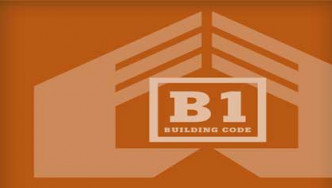
Guidance on barrier design for Building Code clause B1
1 March 2012
Barrier design loading requirements and recommendations for designers, manufacturers and installers of barriers.
Safety of entry/exit to the building and the safety of any internal or external stairs.
This clause ensures people can move safely into, within and out of buildings. Access routes include the approach to the main entrance of a building, corridors, doors, stairs, ramps and lifts.
It sets out requirements for:
Record of amendments is a record of changes to the acceptable solutions, verification methods and handbooks.
Early Childhood Education and Care Centres must meet Building Act and Ministry of Education requirements.
Read guidance about early childhood education centres
The Building Code is published in Schedule 1 of the Building Regulations 1992.
The Building Code clauses include objectives, functional requirements and performance criteria. These are mandatory provisions that all new building work must comply with.
The acceptable solutions and verification methods provided on this page are deemed to comply with Building Code clause D1.
MBIE has historical versions of the code clause documents which can be located under 'Previous Versions' and 'Version History'. Alternatively if you cannot find the document you are looking for, you can send an email with the year and code clause you are after to info@building.govt.nz.
Acceptable Solutions and Verification Methods (AS and VMs) were called compliance documents. Some still have the “compliance document” title but the AS or VMs they contain are valid and unaffected by the name change.
Standards are frequently referred to in Acceptable Solutions and Verification Methods. They provide practical information and guidelines for building solutions.
Over 120 building standards used for Building Code compliance are now available for free download.
See the free standards relating to Code Clause D1.
All standards, including the funded ones, can be accessed through the Standards New Zealand website.
These documents are provided for assistance. They are not intended as a means of establishing compliance with the Building Act or Building Code, and they do not have the same status accorded to Acceptable Solutions and Verification Methods under the Act.
Determinations are made by MBIE on matters of doubt or dispute to do with building work. Rulings are legally binding in relation to each case. Circumstances in one case may differ to others.
All building products and building methods that have current CodeMark certification will be listed with their most up to date certificate in the Product Certificate Register on Te Pae.
This information is published by the Ministry of Business, Innovation and Employment’s Chief Executive. It is a general guide only and, if used, does not relieve any person of the obligation to consider any matter to which the information relates according to the circumstances of the particular case. Expert advice may be required in specific circumstances. Where this information relates to assisting people:
This will print only the current page of this guidance document.
Print this page